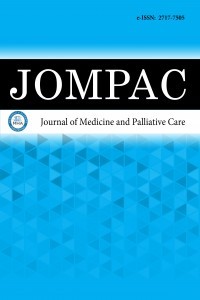1.
Wang X, Nie Sh. The coronary slow flow phenomenon: characteristics, mechanisms, and implications. Cardiovasc Diagn Ther. 2011;1(1):37-43.
2.
Yilmaz H, Demir I, Uyar Z. Clinical and coronary angiographic characteristics of patients with coronary slow flow. Acta Cardiol. 2008;63(5): 579-584.
3.
Tanriverdi H, Evrengul H, Enli Y, et al. Effect of homocysteine-induced oxidative stress on endothelial function in coronary slow-flow. Cardiology. 2007;107(4):313-320.
4.
Alvarez C, Siu H. Coronary slow-flow phenomenon as an underrecognized and treatable source of chest pain: case series and literature review. J Investig Med High Impact Case Rep. 2018;6:2324709618789194.
5.
Beltrame JF. Defining the coronary slow flow phenomenon.Circ J. 2012; 76(4):818-820.
6.
Li JJ, Wu YJ, Xue-Wen XW. Should slow coronary flow be considered as a coronary syndrome? Med Hypotheses. 2006;66(5):953-956.
7.
Sezgin AT, Barutcu I, Sezgin N, et al. Contribution of plasma lipid disturbances to vascular endothelial function in patients with slow coronary flow. Angiology. 2006;57(6):694-701.
8.
Camsari A, Pekdemir H, Ciçek D, et al. Endothelin-1 and nitric oxide concentrations and their response to exercise in patients with slow coronary flow. Circ J. 2003;67(12):1022-1028.
9.
Pekdemir H, Cin VG, Cicek D, et al. Slow coronary flow may be a sign of diffuse atherosclerosis. Contribution of FFR and IVUS. Acta Cardiol. 2004; 59(2):127-133.
10.
Arroyo V, Garcia-Martinez R, Salvatella X. Human serum albumin, systemic inflammation, and cirrhosis. J Hepatol. 2014;61(2):396-407.
11.
Li T, Li X, Wei Y, et al. Predictive value of c-reactive protein-to-albumin ratio for neonatal sepsis. J Inflamm Res. 2021;14:3207-3215.
12.
Babat N, Kaya Y, Demir H. Correlation IMA with TIMI frame count in slow coronary flow: can it be a guide for treatment? Aging Male. 2020;23(5):635-640.
13.
Peters RJ, Moons AH. Platelet function and coronary artery disease. Eur J Clin Invest. 2001;31(1):3-5.
14.
Shirai Y, Shiba H, Haruki K, et al. Preoperative platelet-to-albumin ratio predicts prognosis of patients with pancreatic ductal adenocarcinoma after pancreatic resection. Anticancer Res. 2017;37(2):787-793.
15.
Hao P, Feng S, Suo M, et al. Platelet to albumin ratio: a risk factor related to prognosis in patients with non-ST-segment elevation acute coronary syndrome undergoing percutaneous coronary intervention. Int J Cardiol. 2024;395:131588.
16.
Şahin DY, Gür M, Elbasan Z, et al. Mean platelet volume associated with aortic distensibility, chronic inflammation, and diabetes in patients with stable coronary artery disease. Clin Appl Thromb Hemost. 2014;20(4):416-421.
17.
Ozyurtlu F, Yavuz V, Cetin N et al. The association between coronary slow flow and platelet distribution width among patients with stable angina pectoris. Postepy Kardiol Interwencyjnej. 2014;10(3):161-165.
18.
Demirkiran A, Aydin C. Relationship between uric acid/albumin ratio and coronary slow flow. European Res J. (2023);9(5):1171-1177.
19.
Aksoy F. Do neutrophil lymphocyte and platelet-lymphocyte ratios determine surgical treatment method in peptic ulcer? Selçuk Tıp Dergisi. 2016;32(3):56-57.
20.
He Z, Wang H, Wang S, Li L. Predictive value of platelet-to-albumin ratio (PAR) for the cardiac-associated acute kidney injury and prognosis of patients in the intensive care unit. Int J Gen Med. 2022;15:8315-8326.
21.
Gökmen F,Türkön H,Akbal A et al. The relationship between inflammatory parameters and atherosclerosis with ischemic modified albumin levels in Sjögren syndrome. Selçuk Tıp Dergisi. 2014;31(1):20-23.
22.
Durgut H, Ozer SB, Kucukkartallar T. Role of ischemia-modified albumin in early diagnosis of acute mesenteric ischemia in rats. Selcuk Med J. 2018; 34(2):55-59.
23.
Zhang S, Wang H, Chen S, et al. Prognostic nutritional index and prognosis of patients with coronary artery disease: a systematic review and meta-analysis. Front Nutr. 2023;10:1114053.
24.
Li T, Yuan D, Wang P, et al. Association of prognostic nutritional index level and diabetes status with the prognosis of coronary artery disease: a cohort study. Diabetol Metab Syndr. 2023;15(1):58.
25.
Huang Y, Zhang Q, Li P, et al. The prognostic nutritional index predicts all-cause mortality in critically ill patients with acute myocardial infarction. BMC Cardiovasc Disord. 2023;23(1):339.

